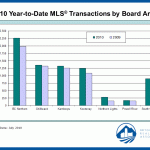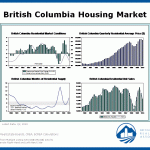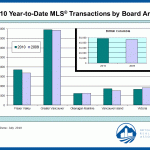B.C. Real Estate & Housing Market Outlook For 2010 to 2012

Housing market activity in British Columbia is set to gradually improve over the next two years after deteriorating sharply for most of 2010. While weak demand is forecast to persist into early 2011 and lead to further home price declines, the combination of lower prices and mortgage rates will act as a catalyst for rising sales through 2012. A gradual improvement in the economy and modest rates of household formation will also provide support. Housing starts also look to edge higher over the forecast horizon as builders take their cue from the rising activity in the resale market. However, new home construction will remain subdued relative to cycle highs observed from 2005-2008.
- Looking forward, sales are forecast to embark on a rising trend through 2012, but remain low.
- This year, home sales, as defined by annual market arms-length residential transactions, in the province are expected to fall 7% from 2009 levels. Declines will be led by a significant cut in apartment condominium sales of 19%. Single-detached sales will remain relatively flat.
- Stronger demand from the younger first-time buyer segment will lead to increased sales of multi-family units.
- These factors will lead to sales increases of 5% and 9% in 2011 and 2012. However, overall transactions will remain 20% below peak levels reached during the 2005 – 2007 period.
- A gradual downtrend in housing inventory and rising sales is expected to stabilize price levels.
- Lower inventory levels and higher demand is forecast to push price levels higher through 2012.
- Thompson/Okanagan (including Kamloops) sales are expected to dip 5%.
- The main assumptions underlying this forecast includes a gradual but sustained economic growth trajectory, conducive to modest employment gains, a favorable mortgage rate environment for consumers, and positive net-migration similar to recent years.
BC Housing Outlook 2010-2012 Kamloops Real Estate MLS Listings Information



